While on campus, emergency management and homeland security student Brooke M. Strubel lived and volunteered at Willing Hand Hose Co. in Montoursville.
Responding with Resolve
Published 08.18.2020
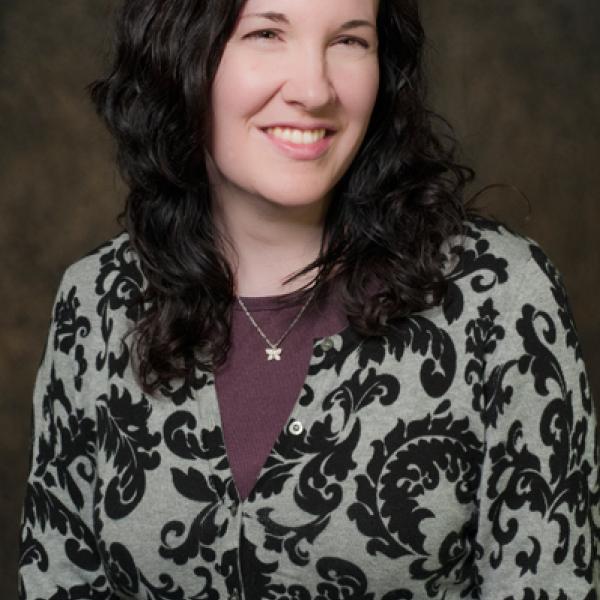
by Jennifer Cline
College Editor
As the spread of coronavirus compelled communities across the globe to drastically change their approach to daily life, the community of problem solvers at Pennsylvania College of Technology rose to the challenge, revealing new levels of compassion and ingenuity.
“This unconventional form of education is the exact opposite of what our college’s hands-on based instruction requires,” said residential construction technology and management student Jack E. Stahley, “however, we have come together to adapt to these changes that have been forced upon us.”
In March, as the coronavirus emerged in Pennsylvania, Penn College extended Spring Break for a second week, asking students to remain at their permanent residences while faculty prepared to teach online for at least a few weeks.
As the situation quickly progressed, Gov. Tom Wolf asked all non-life-sustaining businesses, including college campuses, to close their physical locations and told residents to stay home as much as possible. Within two weeks, the entire state was subject to a stay-at-home order.
Remote learning is a particular challenge for a college of technology that specializes in hands-on education. In fact, it was hands-on industrial arts courses at Williamsport High School (now the college’s Klump Academic Center, the oldest building on campus) that grew into the Williamsport Technical Institute, which later transitioned to Williamsport Area Community College and then to today’s Penn College.
Fortunately, innovation and determination are also part of the college’s foundation.
“Adaptability remains another Penn College trademark,” President Davie Jane Gilmour said. “We are mindful, as well, of our commitment to provide students with the type of instruction for which we are renowned, and of our responsibility to fulfill the needs of employers, who desperately need our skilled graduates to continue operations in uncertain economic times.”
Still, the abrupt change in plans – and everyday life – was jarring.
Jordan S. Wise, a health information technology student, had hoped to prove himself during his final season on the golf team . News that the North Eastern Athletic Conference was canceling all spring sports seasons made his heart sink.
Essential workers
In health care, manufacturing and any number of service fields, a vast group of Penn College alumni, students and employees continued their work while the majority of the nation attempted to thwart the virus’s spread by staying home.
“If you look at the list of essential businesses that are open, both at the federal level and the state level, you would be hard-pressed to not find a Penn College major on that list,” Gilmour said. She called those workers “our true heroes. They are working on the front lines to deliver patient care and important services that have to happen for all of us while we work through this pandemic.”
For 2015 graduate Kyle Stavinski, a critical care flight paramedic and educator for Geisinger’s Life Flight, a part-time paramedic for Susquehanna Regional EMS and part-time instructor at Penn College, the pandemic has caused uncertainty on many fronts.
“Most would claim the most obvious ‘uncertainties’ are: Do I have the virus? Will I transmit the virus to my family? Is my protective equipment – gloves, face shields, gowns, etc. – protecting me? Is there enough personal protective equipment to sustain this rapidly unfolding virus? While those are the most current ‘uncertainties,’ there is the one unique ‘uncertainty’ of: Will I lose my job?”
While the work has always held inherent dangers, the new concerns are real, and are faced by EMS personnel on every call, Stavinski said. “And to top off these ‘uncertainties,’ providers are radically changing the way they confront patients during an emergency.”
Emergency management and homeland security student Brooke M. Strubel worked as an emergency medical technician in her Lancaster County hometown while taking remote classes.
“I, along with thousands of other EMTs, have signed up to take these risks, and if I knew about this pandemic back then, I still wouldn’t have changed my decision,” Strubel said.
Strubel is among many students who continued to work in health care and other essential fields.
Nursing student Connor Burke (see “Trading Uniforms”), a Wildcat baseball player who works at his hometown hospital as an emergency room technician during college breaks, stepped back into service when the college began remote instruction.
“I plan to provide as much help as I can in the ER throughout this pandemic,” he said.
At least three students who are members of the Pennsylvania National Guard were called into active service as the semester closed out.
Kristien T. Quintanilla, enrolled in human services and restorative justice, and freshman construction management student Mason E. Blethen were both tasked with providing help at understaffed nursing homes.
Quintanilla, a combat medic in the Guard, performed the duties of a certified nursing assistant at a rehabilitation and nursing home in Broomall, Delaware County, while Blethen, whose military occupational specialty is machinist/welder, served as support staff at a similar kind of facility in the Harrisburg area.
“We’re helping nurses so they are not pulling double shifts, so they can get some rest,” Blethen explained.
In addition to delivering food, moving trays and the like, Blethen said his secondary mission was “just generally being there to talk to them (residents of the facility), because none of their families are able to see them.”
Adapting coursework
Moving lessons from labs to online platforms was a hurdle for students and faculty alike, but employees summoned their creative energy to make the transition and support students through it.
Madigan Library and Information Technology Services staff deployed laptops to students in need.
In the dental hygiene and paramedic programs, directors mailed supplies to students to continue practicing skills at home.
“While some other programs had no choice but to suspend teaching their paramedic students, we are fortunate enough to have the faculty, staff and technology needed to continue our students’ education during the COVID-19 closures,” said Christopher T. Boyer, ’03, director of the paramedic program.
Chris C. Warren, building construction technology instructor, drove more than 500 miles to deliver materials to students in his Interior Finish class so they could complete a pared-down version of their lab project at home.
He left State College at dawn, loaded a truck bed at the college, and set off on his mission. Warren and the students observed prescribed safety measures at every dropoff, wearing face masks and gloves and ensuring the outdoor deliveries followed social-distancing guidelines.
“We, as Penn College students, are problem solvers, and this has been our biggest challenge yet,” said Stahley, one of Warren’s students. “In the field, we will have to overcome these difficulties and figure out how we can still get the project at hand completed, and completed successfully.”
Many faculty provided live video feeds to demonstrate skills, including high-climbing GoPro videos by Michael A. Dincher, assistant professor of horticulture, and Wyatt C. Forest, laboratory assistant for horticulture, to deliver instruction for arboriculture labs.
Graphic design faculty uploaded student work to continue group critiques during class time, while leaders of the college’s new student chapter of AIGA, the professional organization for design, developed a YouTube channel where students share design tips and tricks.
“Skillshares are essential in majors like graphic design, where the field is always evolving and technology is advancing,” said Alexandra D. Petrizzi, president of AIGA Penn College. “Even as a graduating senior, I’ve learned something from all of the tutorials posted that will help me as a student and in my future career path.”
And, as it always has, classwork continued to adapt in response to real-world cues.
As nonessential businesses were ordered to close their physical sites and restaurants were told to provide takeout and delivery only, Spyke M. Krepshaw, instructor of web and interactive media, saw a community need that he and his students could help meet.
“I strongly believe that we need to help support the people and businesses in our community during this time of crisis, so I came up with the idea of offering my services free of charge to help businesses start selling their goods online,” Krepshaw explained.
Working through the Williamsport/Lycoming Chamber of Commerce to promote the service, Krepshaw and seven students provided online ordering systems and other website-related services for 12 businesses in the Williamsport area.
More community outreach
Early in the crisis, various departments collected supplies – originally intended for on-campus student and employee use – and distributed them to nursing homes.
Donations included 14,000 vinyl gloves, 4,000 nitrile gloves, 300 procedure masks, 170 isolation gowns, 125 face masks with fluid shields, 50 isolation masks, 20 personal protection kits (gown, gloves, booties, cap and mask), 20 bottles of hand sanitizer, about 670 N95 masks, 1,000 additional masks, and transparencies to be repurposed for facial shielding.
The college’s General Services staff collected the materials and sorted the items to facilitate distribution.
In addition, Eric K. Albert, who retired in August as an associate professor of automated manufacturing, produced more than two dozen face shields, which help protect health care workers from fluids, using the college’s Stratasys 3D printers.
“You punch three holes into an acrylic sheet, snap it into the visor, and you have a face shield,” Albert said.
Albert also produced eight non-FDA approved ventilator splitters using his own materials and 3D printer. Two splitters allow a single ventilator to serve two patients.
“It’s a classic case of technology solving problems,” Albert said. “This is giving students a first-hand look at the important role technology, in this case additive manufacturing, can play in combating a crisis.”
We, as Penn College students, are problem solvers, and this has been our biggest challenge yet.
Likewise, student Matthew A. Semmel, who in May earned a bachelor’s degree in engineering design technology and an associate degree in plastics and polymer technology, used the technology at his disposal while studying at home to create visors – or brackets – for face shields.
Semmel modified a CNC router that he usually uses for woodworking projects by adding a cooling system and an air line to cut the brackets.
Between classes, he cut 310 visors from 3/16-inch polycarbonate sheets. The shields, which were then assembled with other pieces by a leader in his community, were distributed to several hospitals near his Carbon County hometown.
Alumnus Franklin D. Gillis, who is a construction/building science instructional specialist for the college’s National Sustainable Structures Center, used the plumbing and pipe-fitting skills he learned in the Mechanical Systems I class in Fall 2011 to fabricate the framework for five EMS airway hoods to be used at Geisinger Medical Center.
Gillis holds Penn College degrees in heating, ventilation and air conditioning technology (2013) and applied management (2018).
The PVC frames can be covered with clear plastic to protect health care workers while working in the airways of potentially infected patients.
Staying positive
While the coronavirus disrupted everyone’s plans, many found positives.
Valerie J. Kovalick, simulation laboratory coordinator in the nursing program, is one of those who created video lessons for students.
“One positive of working from home is that I have had time to investigate other tools and software and put what I have learned to good use,” she said. “My hope is that other faculty will be able to benefit from the ability to make custom content … once we return to campus using these tools.”
Blethen, who chose the Guard over active duty because it would enable him to serve his community, appreciates that sense of community even more.
“It makes you value social interactions,” he said. “It brings people together because we’re all in the same boat.”
Other students are inspired by the way their classmates and faculty have responded.
“I feel pride in knowing that I am enrolled at an institution that is taught by professors that truly care about their students and community,” said SGA’s Ferguson.
“This is a great example of how we are different than any other college, perfectly showing what we are all about: not just taking the easy way out of a situation, but coming together as a team and conquering it,” said construction student Stahley.
“I am proud to say that I am a student at PCT, because there is so much more to us and who we are than ‘just’ a hands-on school.”
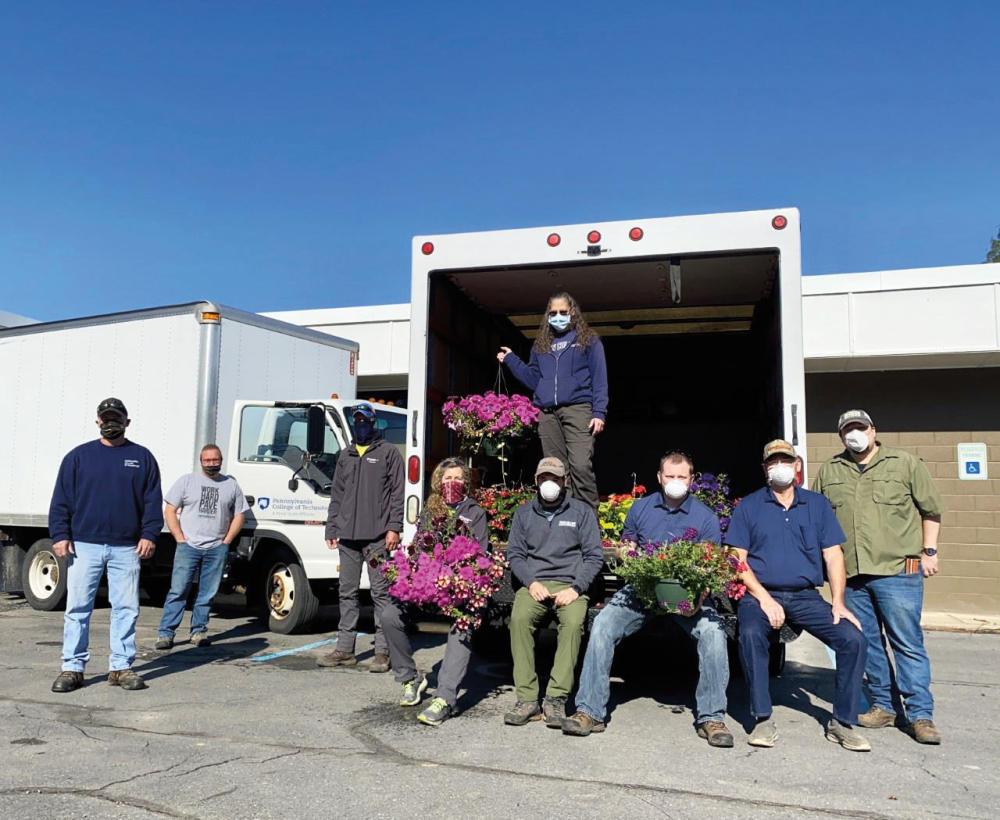
Our People
Flower Deliveries to UPMC Hospitals
Penn College employees load about 850 potted flowers and hanging baskets for delivery to UPMC hospitals in the Williamsport area for distribution to nurses during National Nurses Week in May. The flowers were originally cultivated at the college’s Schneebeli Earth Science Center for a sale in the center’s greenhouses and as a learning project for students in plant production courses. Photo courtesy of Wyatt C. Forest

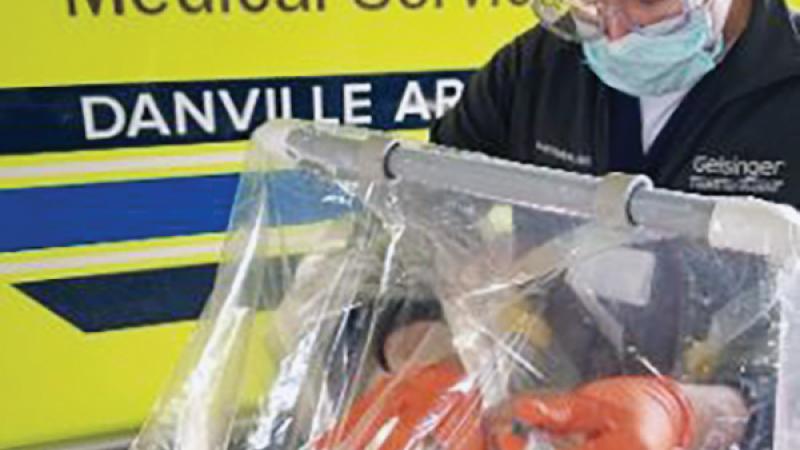
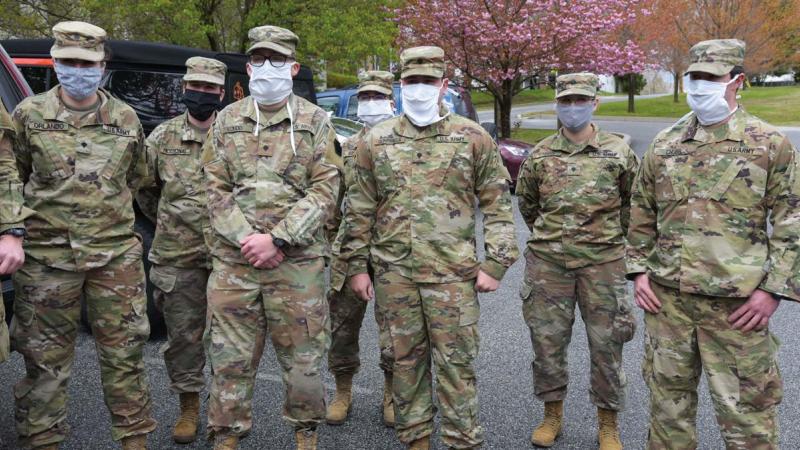
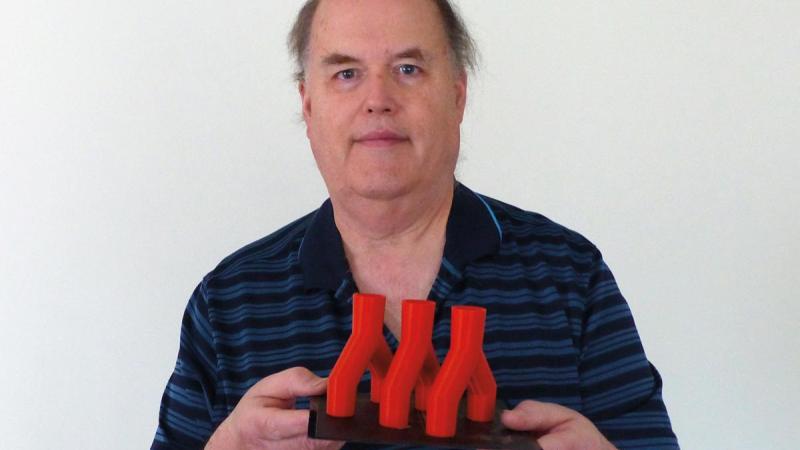
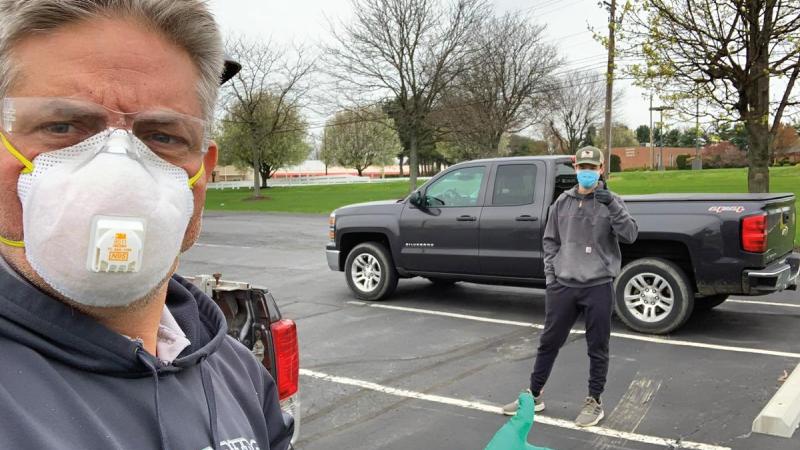
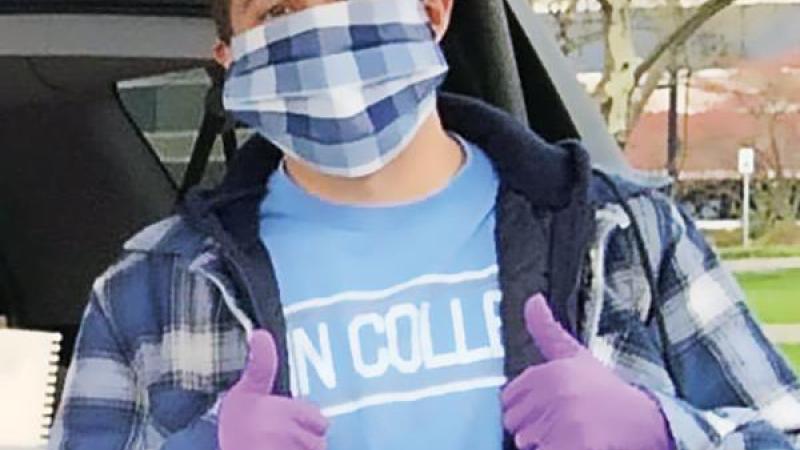
Share your comments
Penn College Magazine welcomes comments that are on topic and civil. Read our full disclaimer.
We love hearing from you